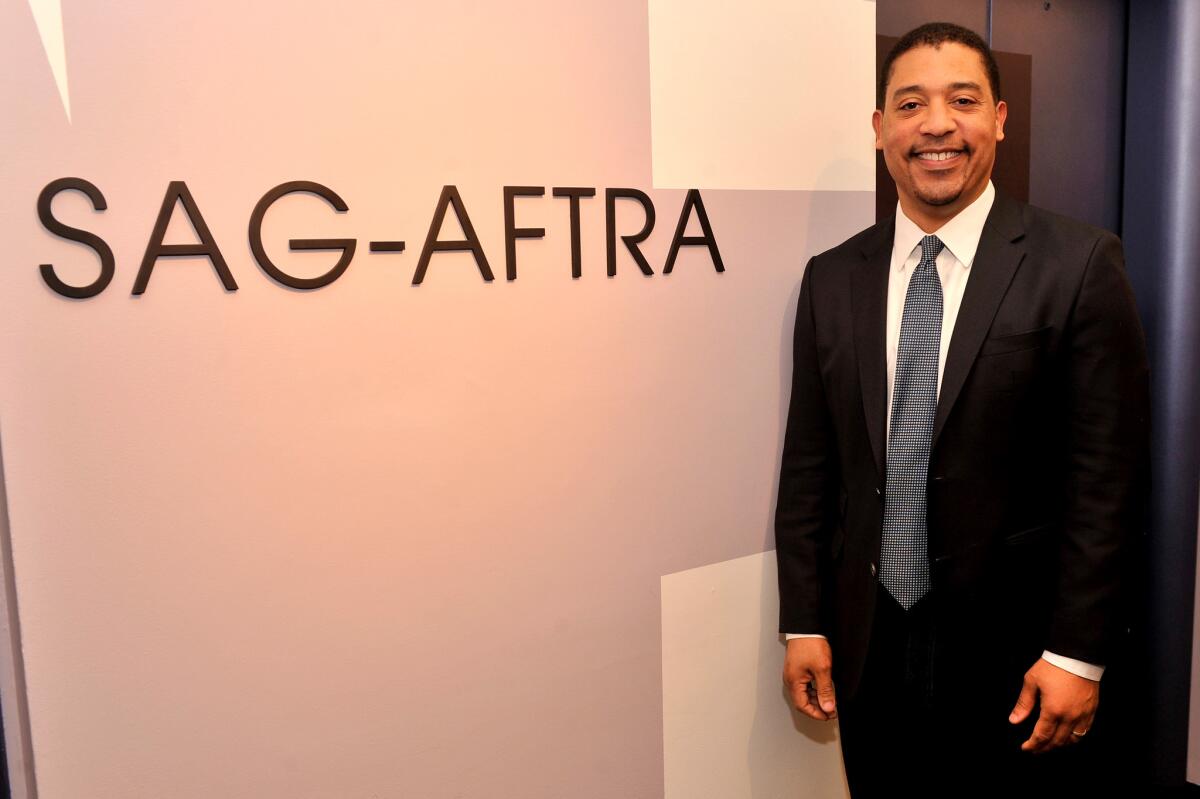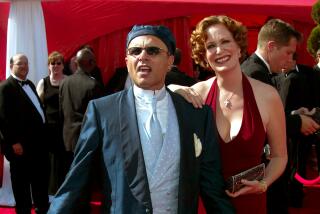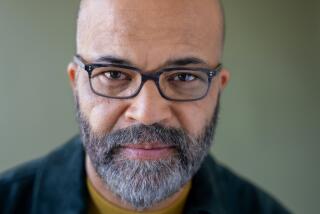What Hollywood can learn from the NFL in addressing its diversity problem

David White is national executive director of SAG-AFTRA, Hollywood’s largest union.
As one of the highest-profile African American leaders in Hollywood, David White has an important perspective on the topic of diversity in the film and television industry.
White is national executive director of SAG-AFTRA, Hollywood’s largest union.
It represents more than 160,000 actors and other performers.
The Los Angeles Times recently spoke with White about the #OscarsSoWhite protest over the paucity of non-white nominees at the 88th Academy Awards.
SIGN UP for the free Gold Standard newsletter >>
White said Hollywood’s “decision makers” need to fix what he calls a “pipeline problem” that restricts the flow of diverse talent in Hollywood.
Here is an excerpt of the conversation:
What’s your response to the Academy’s recent diversity announcement?
What Academy President Cheryl Boone Isaacs and Dawn Hudson did is more difficult than they are getting credit for. They looked their community in the eye and in the mirror and said, “We as decision makers are going to make different decisions to help ensure that tomorrow doesn’t look like yesterday.” And for that I applaud them.
It sends a strong, positive message from a significant institution in the industry. It’s important to set a different tone, and it will actually help to change the composition of people who vote on this important award.
There are many decision makers in this industry, but there are three important groups: the film and television studio chiefs; the agents that package projects, and the buyers of the projects who help to shape what’s actually going to be filmed. If the decision makers in each of these categories made different types of decisions, that would be enormously helpful. For example, studio chiefs should consider instituting a version of the NFL’s Rooney Rule.
Why would the Rooney Rule work in Hollywood?
The Rooney Rule states that coaches and coordinators can only be hired after at least one diverse candidate is interviewed. They instituted this in 2003, and it absolutely changed the landscape throughout the league. The studio heads could say at a VP level and above, “Nobody gets hired unless until at least one diverse candidate has been interviewed.” If they collectively sent that message, you do something similar to what the Academy leadership is attempting to do.
The Rooney Rule works in the NFL but would it work in Hollywood, which has its own rules of the game?
Yes, but we can’t use our unique characteristics as an industry as an excuse to avoid addressing this problem. Unless and until people in a position of power wield their authority in a manner that addresses this persistent plague, the industry is not going to change.
You’ve said Hollywood has a “pipeline problem.” What do you mean by that?
In order for the pipeline to work, you’ve got to have people with talent and skills, they need to be known by someone and be part of a network, and they need access to a decision maker.
Whether you’re a hairstylist or a set producer or an actor, many have skills but consistently the network they belong to — generation after generation — is a closed network. These are informal networks that grow through people who know each other — they went to the same school, they grew up with one another. What happens is that diverse candidates often don’t go to the same school, they don’t go the same church or synagogue. They don’t have access to that informal network that is a key conduit for success. You can have talent and skill, but if you’re not part of network, more often than not, you’re not going to get the opportunity to showcase your talent.
So how do you fix the network?
Number one, decision makers have to demand that a more diverse group of people are put in front of them. Everyone responds to the decision makers. Then, the people who are part of that network have to actively pull diverse people in, to give them a chance, and that can’t be mandated from above. The industry has to break the habit of surrounding itself with people who look like them, and expand that circle.
In our industry there is no single company that controls everything. Studios are at the top of this chain because they finance, produce and purchase product. They are going to have to set a mandate that flows down to a bunch of different decision markers. I think there will have to be leadership in the studios to take it on themselves. Until you do that, it’s going to be exceedingly difficult to see change in the industry.
It’s not just a problem for the studios, though. What about the role of agents?
Agents are the gatekeepers in our industry. They put together packages of talent for decision makers to review and make decisions on. They are able to promote a career. I’d like to see a more diverse cast of agents, a pipeline of diverse candidates to become agents and an intensive and ongoing review of how they think about the talent.
I don’t believe this is an issue of overt discrimination. I think this is an issue of implicit bias and habits that applies to all of us. Talent agencies are in a position of power in this industry. They’ve got to be part of the solution.
And what about unions like SAG-AFTRA. What can they do to address diversity?
Unions can do a lot. This industry is hard for everyone, regardless of your profile. What unions are concerned about is a level playing field. We have rules in our collective bargaining agreement that forbid discriminatory conduct. We provide a crucial platform for our members to build community and to network, to gain access to decision makers. We also educate and promote issues of diversity and host panel discussions at film festivals. We can be more forceful in speaking out against this deeply embedded problem and pushing for specific actions to address it.
MORE ON HOLLYWOOD DIVERSITY:
Black viewership of the Oscars was only slightly down; Latino audience grew by 8%
How’d Chris Rock do? Critics (mostly) liked his Oscars performance
The high-stakes risks and rewards of social media on the Oscars red carpet
More to Read
From the Oscars to the Emmys.
Get the Envelope newsletter for exclusive awards season coverage, behind-the-scenes stories from the Envelope podcast and columnist Glenn Whipp’s must-read analysis.
You may occasionally receive promotional content from the Los Angeles Times.







